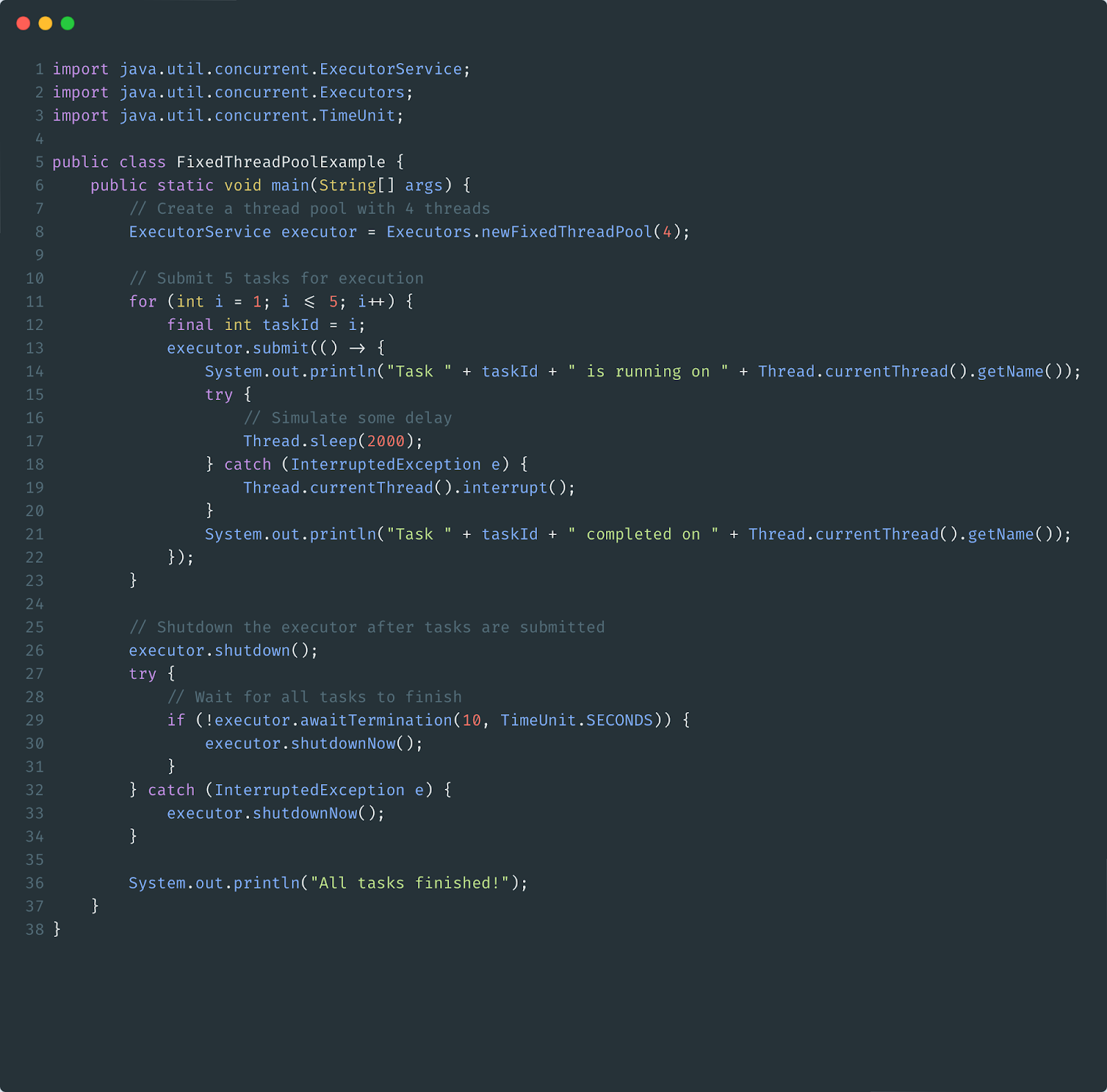
Ife Jeremiah
Ife Jeremiah is a software engineer focused on providing customer-centric solutions using software technology.
Article by Gigson Expert
Today, there is this expectation that software applications are to be responsive, efficient, and even capable of handling numerous tasks at the same time. While this is true,it is important to make careful considerations and have a good understanding of its complexities. In this article, I'd be discussing some key concepts in managing concurrency in Java to build robust and performant applications.
Concurrency
When you build Java applications that deal with large amounts of work, especially work that can be done in parallel, concurrency becomes important. Concurrency is the ability of a program to execute multiple tasks in overlapping time periods either on different CPU cores or by interleaving execution, creating the illusion of a simultaneous execution. In Java, this often means working with multiple threads.
Done right, concurrency can make your programs faster and more responsive. Done wrong, it can lead to bugs that are difficult to reproduce, crashes, or wasted processing power. Let’s go through how to handle multithreading efficiently in Java.
Threads
In Java, a thread is a lightweight unit of execution. The Java Virtual Machine (JVM) manages these threads for you, but you still have to think about how and when they run. You can create a thread by:
- Extending the Thread class
- Implementing the Runnable interface
- Using the Callable interface
- Leveraging higher-level APIs such as ExecutorService
The lower-level approach of manually creating and starting threads works for simple cases, but it doesn’t scale well. For most real applications, you’ll want to use the concurrency utilities in java.util.concurrent package.
Use the Right Tool for the Job
Manually starting threads can quickly become messy. Instead, use thread pools with ExecutorService. This way, you can submit tasks without having to worry about how the threads are created or destroyed. The executor reuses threads, which saves time and system resources.
Creating threads is expensive because it involves several resource-intensive tasks for the operating system.
You see, when a new thread is created, the operating system must perform a number of tasks like, allocating memory for the new thread's stack, setting up context, and adding this new thread to the operating system’s scheduler, which then determines when and for how long the thread will run on a CPU.
These low-level operations consume CPU cycles and memory.
So, by reusing threads, an ExecutorService avoids these repeated costs, making it far more efficient to manage concurrent tasks, especially when dealing with a large number of short-lived tasks.

In the above listing,
Line 8: Executors.newFixedThreadPool(4) – Creates a pool with 4 worker threads.
Line 12: executor.submit() – Submits tasks to the pool. If all threads are busy, tasks will wait in a queue.
Line 26: executor.shutdown() – Stops accepting new tasks and shuts down when all tasks are done.
Line 29: executor.awaitTermination() – Waits for all tasks to be completed.
Shared Data and Synchronization
When multiple threads work with the same data, you must ensure they don’t interfere with each other. More like establishing synchronicity in an asynchronous environment.
Java provides several ways to handle this, a few are:
- The volatile keyword is a keyword that ensures a variable's value is always read directly from and written directly to main memory. Its sole purpose is to guarantee that one thread's changes to the variable are immediately visible to all other threads, preventing "stale" data.
- The synchronized keyword is a keyword that ensures only one thread accesses a block of code or method at a time.
- ReentrantLock is a lock with the same basic behavior as synchronized keyword, but it offers advanced features like checking a lock’s status, interrupting a thread while waiting for a lock (in cases where a wait is taking forever), and timing out locks.
- Atomic classes are sets of classes that support thread-safe operations on single variables. These operations are guaranteed to be executed as a single, indivisible step without interruption from other threads.
The volatile keyword avoids the overhead of locking. It guarantees visibility by ensuring that all threads see the most recent value of a variable. However, it is only suitable for single-variable assignments and cannot be used for compound operations.
You can use the synchronized keyword for simple locking needs where you want to protect a method or a block of code, but it's less flexible than ReentrantLock.
Use ReentrantLock when you need advanced locking features like interruptible and timed locks. However, it can become complex to use, as you’re responsible for explicitly handling all operations.
Atomic classes are best used for single-variable operations. They are highly scalable and a great choice for simple, concurrent counters.
If you need to perform multiple operations, you must use a lock (synchronized or ReentrantLock) to protect the entire block.
Now, the key is to synchronize only when necessary. Too much locking slows things down, while too little leads to race conditions. You need to find the right balance.
Avoiding Common Drawbacks
Race conditions: Two threads access shared data in a way that produces unexpected results.
Deadlocks: Two or more threads wait forever for each other to release resources.
Livelocks: Threads keep responding to each other’s actions but make no progress.
Starvation: A thread never gets CPU time because others take priority.
These problems can be avoided by keeping critical sections small, acquiring locks in a consistent order, and testing under realistic loads.
Use Modern Concurrency Features
Java has evolved to make concurrency easier:
- ForkJoinPool for dividing large tasks into smaller pieces
- CompletableFuture for non-blocking asynchronous programming
- Parallel Streams for simple data-parallel operations
For example, CompletableFuture can chain tasks together without blocking:

In the above listing,
Line 8: supplyAsync – runs a task that returns a value.
Line 15: thenApply – transforms the result.
Line 21: thenAcceptAsync – consumes the result asynchronously (no return).
Line 26: join() – blocks the main thread until completion.
Testing and Debugging
Concurrency bugs often appear only under certain conditions, making them hard to reproduce. Use tools like ThreadMXBean or profilers to inspect thread activity. Write tests that stress your code under different levels of load and timing variations.
Conclusion
Efficient multithreading in Java is about balance. Use concurrency where it makes sense, but keep complexity under control. Choose the right concurrency constructs, minimize shared state, and always think about what happens when multiple tasks run at once. With a careful approach, you can build applications that take full advantage of modern hardware without becoming a tangle of unpredictable behavior.




